Context
Tool mentors explain how a tool can perform tasks, which are part of ITUP processes and activities. The tasks are
listed as Related Elements in the Relationships section.
You can see the details of how processes and activities are supported by this tool mentor, by clicking the links next
to the icons:
Details
ITRPM provides an automated workflow for deploying releases across business and technology silos within an IT
organization. The goal of the ITSM release management solution is to provide customers with a process-based solution to
address the domain of Release Management as defined by ITIL®.
This goal enables an IT organization to:
-
Plan and oversee the successful rollout of software and related hardware
-
Design and implement efficient procedures for the distribution and installation of changes to IT systems
-
Ensure that hardware and software being changed is traceable, secure, and that only correct, authorized and tested
versions are installed
-
Communicate and manage expectations of the customer during the planning and rollout of new releases
-
Agree to the exact content and rollout plan for the release, through liaison with Change Management
-
Implement new software releases or hardware into the operational environment using the controlling processes of
Configuration Management and Change Management—a release should be under Change Management and can consist of
any combination of hardware, software, firmware, and document CIs
-
Ensure that master copies of all software are secured in the Definitive Media Library (DML) and that the Configuration Management Database
(CMDB) is updated
-
Ensure that all hardware being rolled out or changed is secure and traceable, using the services of Configuration
Management.
The focus of Release Management is the protection of the live environment and its services through the use of formal
procedures and checks.
Release Management works closely with the Change Management and Configuration Management processes to ensure that the
shared CCMDB is kept up-to-date following changes implemented by new releases, and that the content of those releases
is stored in the Definitive Media Library (DML).
This example shows how the IBM® Tivoli® Release Management Process Manager supports the Release Management process.
-
Requesting that a Change be implemented by a Release
The Change Management process can request that Change be implemented within a particular Release or that the
Change be implemented by any available Release.
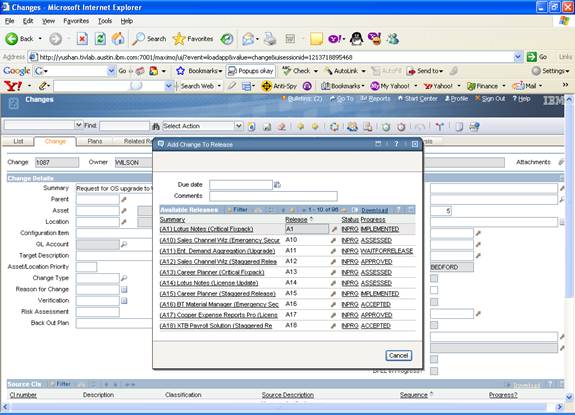
Requesting that a Change be Added to an existing Release
The Release Management process can receive requests from Change Management to add an existing Change to a
Release. The request will contain the Change to add to a Release. When the request is approved by a Release
Owner, the source and target CIs that were associated with Change are added to the Release.
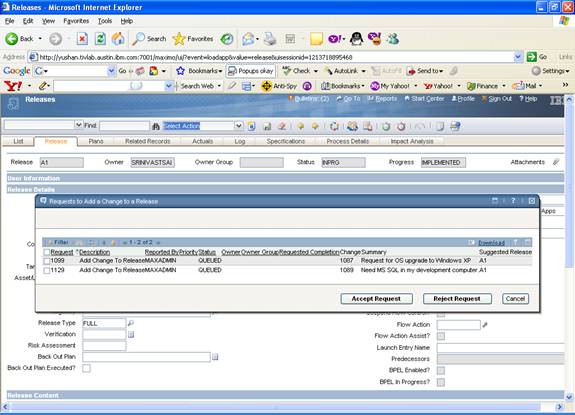
Accepting a request to add a Change to a Release
-
Creating a new release plan
You can create from scratch or use an existing template. When you create from scratch, the templates help
capture customizations to the activities performed throughout the release process based on what type of release
or what the target CIs might be. For example, the release template for an operating system security patch might
skip through planning, building and testing, and flow directly to distribution and install if the target CI is
a desktop. However if the target CI is a server supporting critical applications, the template would drive it
through planning, testing, and scheduling to ensure the installation does not impact the applications running
on that server at a critical time. Once a release plan is created, it can be saved as a template for reuse at a
later time.
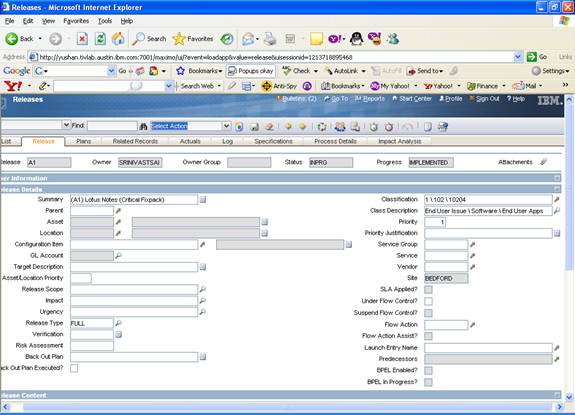
Creating a release
-
Selecting a release plan template
To expedite the creation of a release plan, you can select from existing release templates. Release templates
include what tasks need to done, in what order they need to be done in, and what user or role should perform
them.
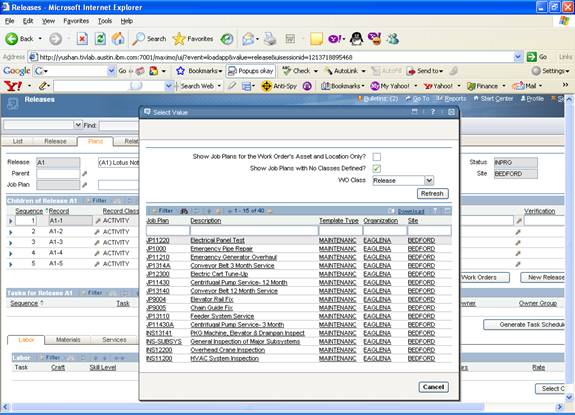
-
Customizing a release plan
With either a new release plan being built from scratch or one based on a template, the release manager can
customize the tasks that take place under all of the process steps. This includes removing or adding tasks,
assigning people or roles to each of the tasks, setting the order in which tasks should be done and target
start and end dates for the tasks. This provides an easy method by which the release plan can be customized to
meet the individual needs of each release.
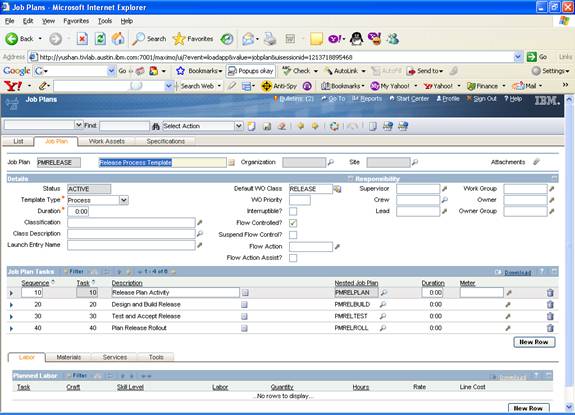
Dynamic flow
-
Editing a task
You can edit task details of an existing task or ones you have just added, giving you complete control over how
the release is executed.
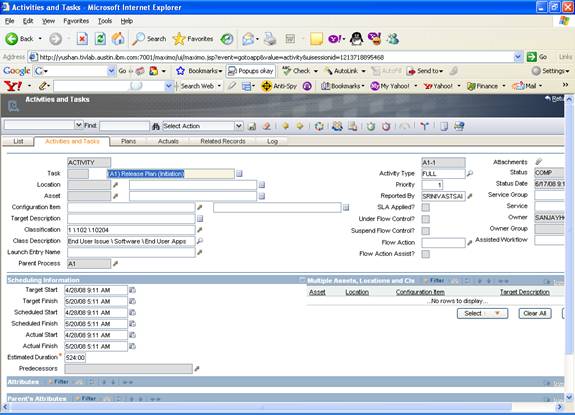
Edit task
-
Scheduling deployment
Scheduling of the implementation tasks can be done with visibility to all releases in plan through the Change
Implementation Schedule, thus avoiding problems with resource constraints or too many tasks planned for the
same CIs at the same time.

Master release calendar
-
Planning distribution
The distribution of the release package can be scheduled separately for individual target CIs or as a group of
target CIs.
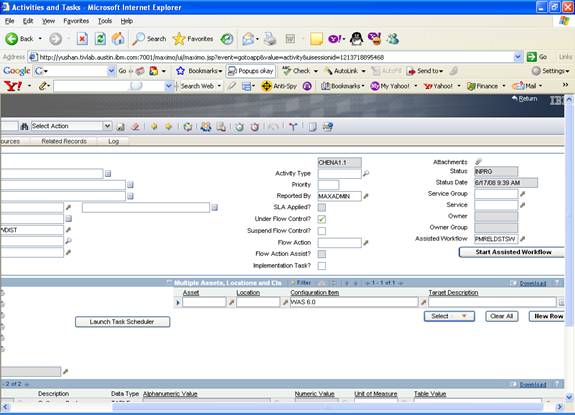
Planning distribution
-
Starting distribution
Using the integration modules developed for Tivoli Configuration Manager or Tivoli Provisioning Manager, the
Release Management process step of distribute and install can automate the invocation of those operational
management products to perform the distribution to the appropriate target CIs at the scheduled time. The
integration module can also accept status back from those products so they can indicate when the distribution
is complete and a status of whether if was successful or had a failure.
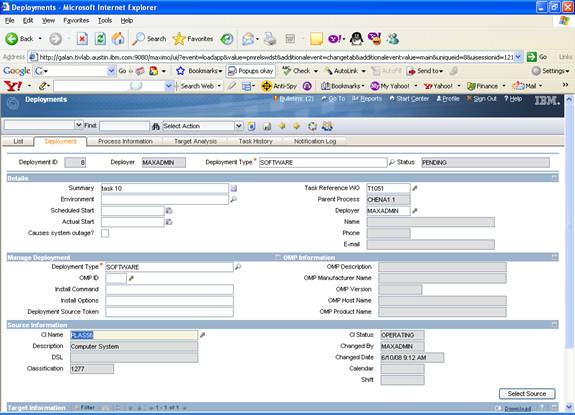
Starting distribution
For more information
For more information about this tool, click IBM Tivoli Release Process Manager at the top of this
page.
|









